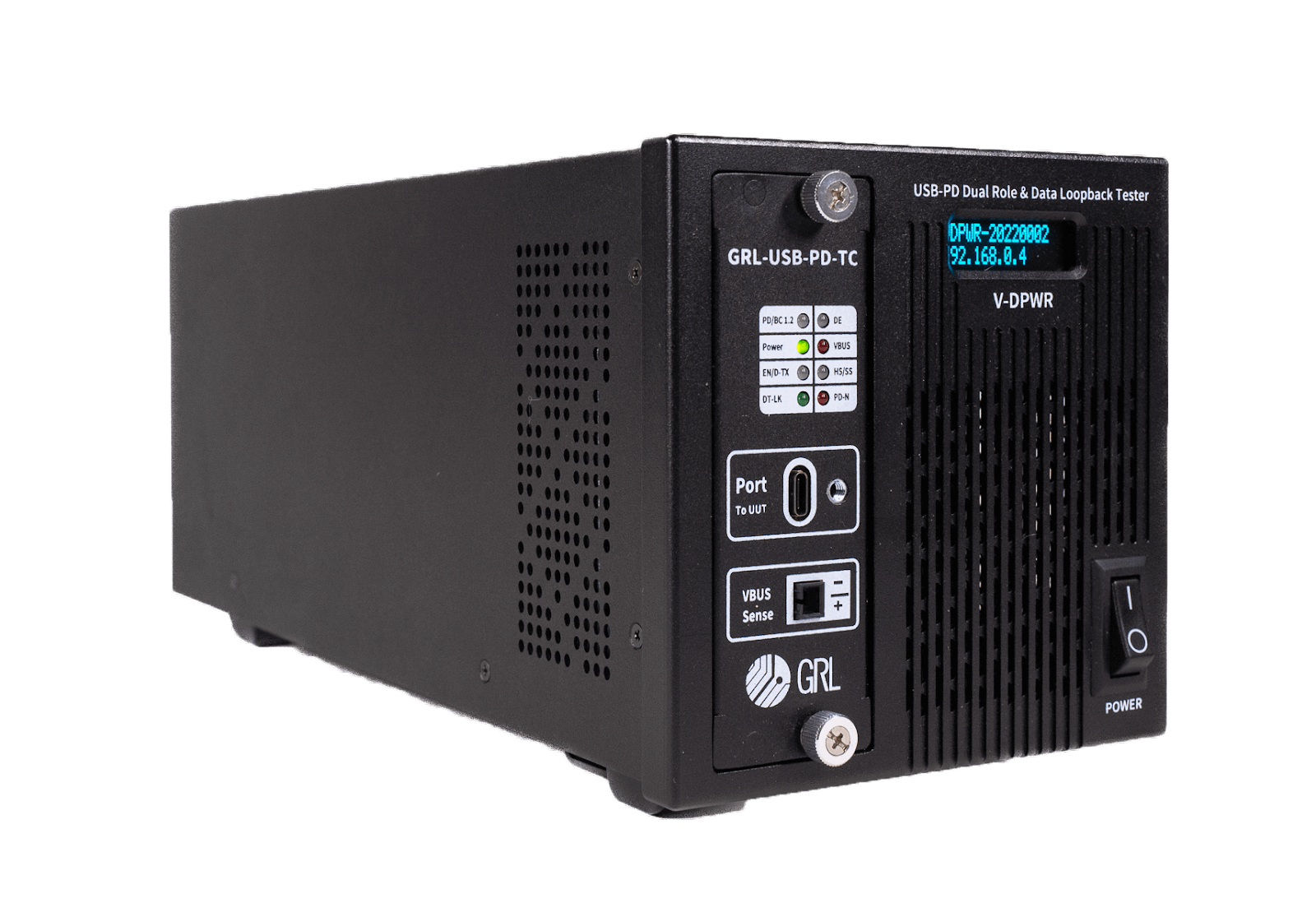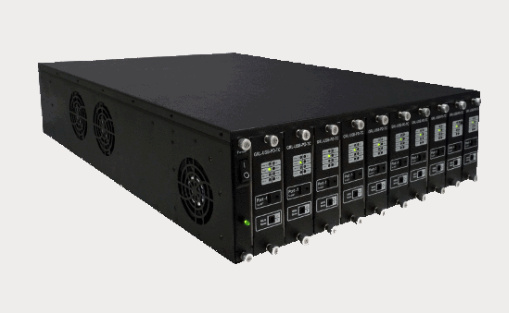Product Overview
Test requirements for USB Type-C and Power Delivery standards cover a wide range of components such as hosts, hub modules, docks, monitors, and chargers, all of which are continuously evolving.
The M1 software is designed to enhance the USB Power Delivery Dual Role Power and Data testing capabilities of the GRL-V-DPWR and GRL-V-UP, which are already capable of running tests accurately and comprehensively. When combined with the M1, these solutions can support even higher volume manufacturing/production floor testing as well as rapid functional verification testing at R&D.
This solution is suitable for functional validation of the following devices (devices labeled with * can only be validated by GRL-V-DPWR):
- Battery Power Bank with USB Power Delivery*
- Laptops, Mobile phones supports USB Power Delivery*
- QuickCharge Chargers
- USB Hubs
- USB Power Delivery Chargers
- USB Type-C Chargers
Key features
Running the M1 software on GRL-V-DPWR or GRL-V-UP allows engineers to create highly customizable test cases with intuitive visual scripting instead of going through tedious programing automation.
M1 enables the following USB Power Delivery functionality tests on GRL-V-DPWR and GRL-V-UP (Note that functions labeled with * are only available on GRL-V-DPWR):
- USB Power Delivery PDO / APDO validation with configurable load and timing test
- Custom VDM test
- Overcurrent Protection (OCP) tests
- PD contract connect/disconnect/negotiation/re-negotiation tests
- Port Role switching test*
- VBUS & VCONN voltage & power regulation tests
- VBUS voltage and power test
- VCONN voltage and power test
USB Power Delivery data role tests unlocked with M1:
- USB Host data enumeration test
- Data Loop Back verification test
- USB Data Link Seed verification test
The addition of M1 also grants users the following testing and validation features, making it a suitable addition to any engineering or design team that seeks to cover all their bases in USB Power Delivery validation (Note that functions labeled with * are only available on GRL-V-DPWR):
- Battery charge/discharge cycle testing*
- External equipment control integration
- Multi-port shared power validation (Up to 10)
- Quick Go/No Go tests for manufacturing floor
- USB Power Delivery & QuickCharge functional validation
Report generation and data analysis:
- Comprehensive reporting test module with in-depth pass/fail statistics
- Conduct simultaneous validation of power & data
- Customize reports and export in multiple formats such as CSV, HTML, PDF, etc.
- Execute and aggregate results for up to 10 stations, all controlled by a single controller
Options & Accessories
The following add-on accessories are available for manufactures and developers who wish to get the most value and flexibility out of the M1 software. Note that M1 must be used alongside V-DPWR or V-UP:
- GRL-V-DPWR: USB Power Delivery Dual Role Power & Data Loop Back Tester
- GRL-V-UP: GRL USB Power Delivery & Data Loopback Volume Tester
- GRL SPL cables with VSense extension: 50cm, 1m, and 3m
- USB-PD-TC-100 Test Card for GRL-V-UP-10SC and V-DPWR
GRL also provides USB Power Delivery testing services at our Authorized Test Labs (ATLs) worldwide.
For inquiries on which accessories to purchase and future updates on features such as short circuit test, cable orientation flip, power efficiency, and E-marked cable emulation, you may reach out to us or look out for updates on our newsletter or LinkedIn.
Download & Purchase
Request a demo to watch the GRL-M1 Automation software for USB PD Dual Role Power and Data Loopback Volume Tester in action.
What is the latest USB Power Delivery specification?
Announced in 2021, the USB PD Revision 3.1 specification represents a significant advancement in connectivity standards, delivering an unprecedented 240W of power over fully featured USB Type-C® cables and connectors. Previous iterations of USB PD were constrained to 100W, relying on a solution based on 20V through USB Type-C cables rated at 5A. With the 2.1 release of the USB Type-C specification, the 240W standard and USB PD protocol has now been expanded to encompass more applications that were previously limited to 100W.
Dual Role Power
Dual role power ports are capable of operating as and alternating between the roles of power sink and source.
As a source, the port assumes the Downstream Facing Port (DFP) role. Conversely, the port will assume an Upstream Facing Port (UFP) role as a sink. This flexibility allows devices such as laptops to be charged while simultaneously supplying a charge to other connected accessories. This differs from DRP subclasses which lack the same dynamicism:
- Sourcing devices that provide power but cannot function as DFPs. Examples: USB Type-C and USB PD compatible monitor
- Sinking host that consumes power but cannot function as a UFP. Example: Hub’s DFP
Data Loopback
Data Loopback enables simultaneous testing of communication speed, data integrity, and power supply of USB ports or data lines.
%20and%20Data%20Loopback%20Volume%20Tester%20(V-UP)_Software%20running%20image.png?width=1600&height=643&name=M1%20Automation%20Software%20for%20USB%20PD%20Dual%20Role%20Power%20(V-DPWR)%20and%20Data%20Loopback%20Volume%20Tester%20(V-UP)_Software%20running%20image.png)
%20and%20Data%20Loopback%20Volume%20Tester%20(V-UP)_Software%20running%20complete%20image.png?width=1600&height=643&name=M1%20Automation%20Software%20for%20USB%20PD%20Dual%20Role%20Power%20(V-DPWR)%20and%20Data%20Loopback%20Volume%20Tester%20(V-UP)_Software%20running%20complete%20image.png)

